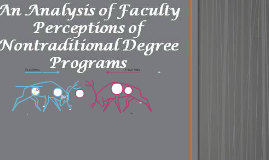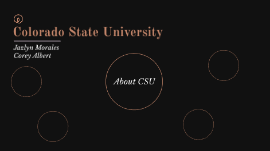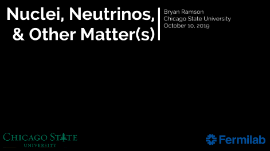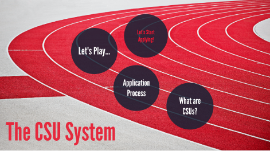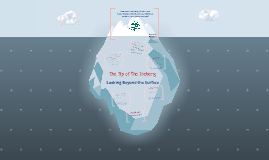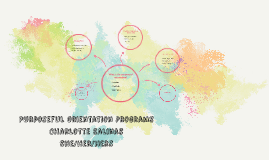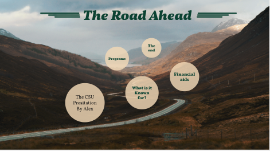CSU Presentation
Transcript: TOPICS TO BE COVERED . Introduction . The Current Situation . Nontraditional Degree Programs in the United States . The Nontraditional Student in the United States . Nontraditional Degree Programs’ Objectives . Faculty Nontraditional Program Relationship . Purpose of the Project . The Nontraditional BOG/BOT Student . Theoretical Scaffold of the Research . METHODOLOGY . Data Results and Findings . RECOMMENDATIONS, IMPLICATIONS, AND CONCLUSION INTRODUCTION Higher education in the United States has changed from an overwhelming traditional student population to include an increase in nontraditional students. Higher education institutions are in locations where nontraditional students can continue or start their education. This has had major implications for universities and colleges. One of the implications occurred because of fiscal instability, which caused a shift in recruitment from the traditional to the nontraditional student. Clark & Beverly (1999) found that as the pool of teenagers has begun to shrink, colleges and universities aggressively recruited adult students to maintain tuition income as a matter of economic survival. RESEARCH QUESTIONS 1. What is faculty’s perception of their experiences with Nontraditional Degree Programs? 2. Are there differences between faculty’s perceptions of their experiences with Nontraditional Degree Programs in a rural setting compared to an urban institutional setting? 3. What are faculty perceptions of the quality of the nontraditional program degree? THE CURRENT SITUATION According to Post Secondary and Economic Success (2011), “Today’s typical college student is no longer an 18-year-old recent high-school graduate who enrolls full-time and has limited work and family obligations. Students today are older, more diverse and have more work and family obligations to balance.” THE CURRENT SITUATION That is, 36% adults age 25 or older (2008), 47% Independent Students (2008), 40% Enrolled in a Public Two-Year (2009), 46% Enrolled Part-time (2008), 36% Minority Students (2009), 40% Low-income (2008), 43% Employed Part-time (2008), 32% Employed Full (2008), 23% Parents (2008), 13% Single Parents (2008), Yesterday’s Nontraditional student is today’s traditional student http://www.clasp.org/admin/site/publications/files/Nontraditional-Students-Facts-2011.pdf NONTRADITIONAL DEGREE PROGRAMS IN THE US At Sarah Lawrence College, one of the new experimental colleges, there were no academic credits, no grades, no examinations, or required courses. Life experience, which includes college and work experiences, was the starting point of the adult student’s higher educational experience. Meyer states, “there was no division between academic studies and practical experience” (p. xi). Meyer’s (1975) research explained that between the 1950’s and 60’s, “the crucial point in the work of the center was the assessment of what the returning student had done in high school, college, and the intervening years. He added that it was “ a simple matter to transfer ways of dealing with students who had left college before finishing the degree” (p. xi). In 1963, according to Meyers, its College Level Examination Program (CLEP), According to Keeton (cited in Meyer),”CLEP test was hailed as a breakthrough toward enabling students to gain recognition for learning without doing it in regular college courses” (p. 99). NONTRADITIONAL STUDENTS IN THE US The definition of the nontraditional student varies from campus to campus in the United States, I was unable to settle upon a common definition of the nontraditional student in the United States. Definitions ranged from students with: disabilities, students with children, students who are 24 years of age or over, students who did not go to a university or college straight out of high school. I found liberation in the fact that most universities did regard the traditional student to be a student entering the university straight out of high school. PURPOSE OF THE PROJECT The goal of this study is to explore the perceptions held by faculty at five institutions that offer the Nontraditional Degree Programs in Illinois. The perceptions held by faculty at universities that offer the BOG/BOT Nontraditional Degree Programs can validate or repeal constructed learning by the nontraditional student, which is the main concentration of the curriculum in the programs. RATIONALE OF THE STUDY The rationale of this study is to help examine the perceptions of the BOG/BOT Nontraditional Degree Programs, the quality of the degree, and the philosophy of the degree as perceived by faculty. Hence, the rationale is to add to the literature that already exists regarding Nontraditional Degree Programs as a quality higher educational tool used at the five public higher education institutions in Illinois. METHODOLOGY The primary research methodology utilized in this study was a Pearson’s Chi-square (X2) and statistics t-test. Chi-square answered the Research Question, “What are faculty






